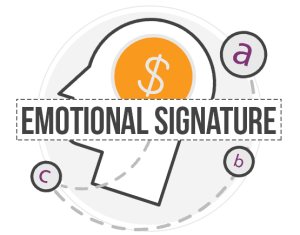I’m obsessed with memory. I love the subject and discussing the behavioral sciences that explain it. Today, we decided to address memory and how crucial it is to enhance your customers’ recollections of their experience with you.
We discussed this concept on a recent podcast with guest Zoey Chen, assistant professor of marketing at the University of Miami School of Business. She, along with colleagues, published about the Return Trip Effect. Chen says that the Return Trip Effect describes how, when you go somewhere you are looking forward to, the trip to the destination often feels like it takes longer than the one going back. For example, driving to Disney World in Orlando takes longer to get there than to get back. Chen and her colleagues decided to show this effect and determine what causes it.
Chen said previous research had a couple of ideas about why the Return Trip Effect occurred. One is that when we go somewhere for the first time, the landmarks are more novel. We use those landmarks and scenery changes as a time marker, and the longer the trip seems, the more time markers we have. However, on the way back, you’ve seen it already, so you don’t notice them as much, have fewer time markers, and the trip feels shorter than the way there. Another is the effect of anticipation, or what Chen calls the “Are we there yet?” effect. The feeling of anticipation makes the time feel like it’s going much slower. When you go home, you don’t have that feeling anymore, so it feels like it goes faster.
 Memory is affected by outside factors like feelings. For example, the Return Trip Effect is memory-based. The assessment was based on memory and always retrospective. Chen and the research team would have people experience something or go somewhere, then, after their return, ask them which felt longer, going there or coming back. The respondents would tell the team what they remembered about how it felt.
Memory is affected by outside factors like feelings. For example, the Return Trip Effect is memory-based. The assessment was based on memory and always retrospective. Chen and the research team would have people experience something or go somewhere, then, after their return, ask them which felt longer, going there or coming back. The respondents would tell the team what they remembered about how it felt.
We wrote about memory in our latest book, The Intuitive Customer, as one of the seven imperatives. Customer loyalty is a function of memory. Also, memories of Customers Experiences are the result of the Peak-End Rule, introduced by Nobel-Prize winning economist Professor Daniel Kahneman. The Peak-End Rule says that memories are formed based on the most intense emotion we felt during an experience and how we felt when it ended.
Memories are formed based on the most intense emotion we felt during an experience and how we felt when it ended.
Chen builds on this concept more. She says our memory for an event starts even before the event begins. Before you go on vacation, you’re excited about your plans, so you have a positive feeling towards it. Sometimes, however, it isn’t as fantastic as you imagined once you get there. However, Chen says some studies show that your anticipatory feelings influence your memory more than your actual experience and can overwrite the real experience over time. In other words, it’s possible for the actual experience to fade away and the anticipated memory to replace it. In other words, our assumptive and expected experience becomes real memory. Sometimes this is referred to as the Sleeper Effect.
We also have many different types of memory. For consumers and businesses, the most relevant are the autobiographical memories. Autobiographical memories are events from our lives. Chen says that regarding autobiographical memories, people tend to remember emotionally salient things. So, we remember events that evoke extraordinarily positive or negative feelings more. Moreover, Chen says that positive memories seem to stick longer than the negative. Also, people remember unique experiences, as well as those that are personally relevant, meaning those with brands with which we identify (in my case, Apple).
I remember when I was 13 or 14, whenever there was a house party, everybody used to get excited. We talked about it for weeks beforehand about the house party and how great it was going to be. However, it was never as good as I thought it was going to be. Maybe that’s because of anticipation, but also because we had created a high level of expectation. If the experience meets our expectations, then our memory will be positive. If the experience does not reach that level of expectation, which is a form of memory, we feel disappointed.
 A lot of what discussed so far is Evaluative Memory. With Evaluative Memories, the Peak-End Rule is highly influential. However, there is also Episodic Memory, which is about the specifics of what you remember. Episodic Memories have different influences that govern them called Primacy and Recency Effects. Primacy is the first information you encounter, which you remember well. Recency is the latest information you encounter, which you also remember well. So, if the experience starts with the positive data on the website, aka the Primacy Effect, then even if you are disappointed upon arrival with the experience’s reality, you can change your mind by the end of it if the experience improves, aka the Recency Effect. In other words, the experience can win you over in an Episodic Memory. Also, Episodic Memories prove once again that endings are crucial for memory formation, although for different reasons than Evaluative Memories.
A lot of what discussed so far is Evaluative Memory. With Evaluative Memories, the Peak-End Rule is highly influential. However, there is also Episodic Memory, which is about the specifics of what you remember. Episodic Memories have different influences that govern them called Primacy and Recency Effects. Primacy is the first information you encounter, which you remember well. Recency is the latest information you encounter, which you also remember well. So, if the experience starts with the positive data on the website, aka the Primacy Effect, then even if you are disappointed upon arrival with the experience’s reality, you can change your mind by the end of it if the experience improves, aka the Recency Effect. In other words, the experience can win you over in an Episodic Memory. Also, Episodic Memories prove once again that endings are crucial for memory formation, although for different reasons than Evaluative Memories.
Details fade over time, but our feelings about the event do not.
Another significant fact about memories is that details fade over time, but our feelings about the event do not. For example, right after you come back from vacation or watch the movie, your memory is still shifting. Talking about it with other people can change your feelings, too. Therefore, even after an experience, verbalizations or additional information can improve your perceptions and, subsequently, your memory.
From a Customer Experience perspective, the changing nature of memory means when you’re asking for customer feedback of what that experience was like, the words that you use can influence how the customer remembers the experience. While that means you can make the experience worse, it also means there is an opportunity to make the memory better than it was or bring positive parts of the experience that you want the customer to remember.
Let me be clear: you do not want to manipulate customers into thinking an experience was better than it was. Not only does that go against the idea of getting authentic feedback, but it can also backfire. People are sensitive to manipulation, and they react negatively to it. I am saying that using a deliberate strategy in the questionnaire to remind people of the high points of experience is a better way to get customer feedback and enhance customer memories than leaving it up to chance and hoping for the best with neutral questions.
You do not want to manipulate customers into thinking an experience was better than it was.
Part of a deliberate strategy is training your team in the soft skills needed to enhance customers’ memories. Our Memory Maker Training teaches people how minds work and what the employees can do to help customers remember the best things about doing business with you.
So, What Can You Do With This Information About Memory?
 As you know, I believe that theory is terrific to talk about, but not very useful in and of itself. To that end, you can take seven actionable steps to implement what you have learned about memory to enhance your Customer Experience.
As you know, I believe that theory is terrific to talk about, but not very useful in and of itself. To that end, you can take seven actionable steps to implement what you have learned about memory to enhance your Customer Experience.
- Decide what type of memory you want people to have about your experience. Different strategies enhance the different types of memory, so you need to know your memory strategy. Is it most important to you that your customers remember their overall evaluation of the experience or to remember specific parts that they could share with others?
- Strive to make experiences unique. People remember the first time they do something so well, but not the third or fourth time. Are you doing things to try to make each experience unique for your return customers so that they will continue to remember it positively?
- Consider the post-experience. The communication with the consumer tends to be seeking complaints or feedback on how well you did. Given that we know after someone has already encoded an experience, additional information could become integrated with that. What other information are you providing customers, and is it in line with your goal? Many opportunities exist to experiment with communication channels and message strategies to help customers remember things better or foster brand loyalty.
- Remember that endings are essential. Too many organizations do not plan the conclusion of the experience to evoke feelings like happy and satisfied, and then build in a way to reinforce them with customers.
- Balance building excitement with maintaining proper expectations. If you build up the experience to the point you can’t deliver on the promise, you will sabotage your successful outcome by disappointing customers and not meeting their expectations.
- Design an experience that reinforces positive memories. As we have said many times, people do not choose to return you based on the Customer Experience you provided. They return based on the experience they remember you provided.
- Be deliberate. Plan what you are going to do after thinking it through comprehensively. Have conversations with your organization and your customers to help guide the plan or do research to understand what customers want and would create the best possible memory of the experience.
Memories are fascinating and useful things for your Customer Experience. That is why you must understand how they memories form and why it is essential that your customers have good ones about your products or services. With deliberate planning, the right type of Customer Experience design, and the proper training, you can enhance customers’ memories of your product or service, which can be just the thing to bring them back for more.
To hear more about this idea in more detail, listen to the complete podcast here.

What customers say they want and what they really want are often different things. It is vital to know what drives value for your organization. Our Emotional Signature research can tell you where you are compared to other organizations and what to focus on to drive value for your customers. To learn more, please click here.
Colin Shaw is the founder and CEO of Beyond Philosophy, one of the world’s leading Customer experience consultancy & training organizations. Colin is an international author of six bestselling books and an engaging keynote speaker.
Follow Colin Shaw on Twitter @ColinShaw_CX


